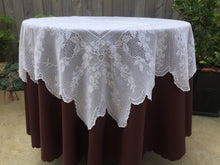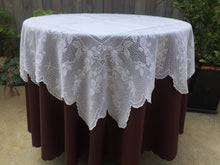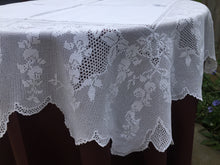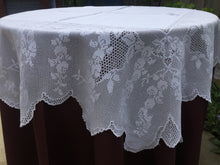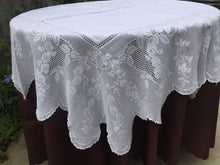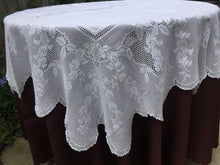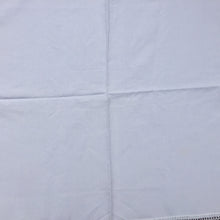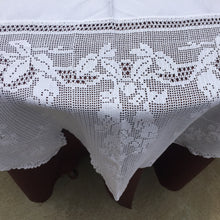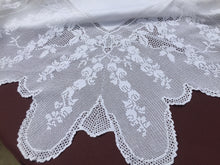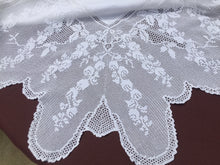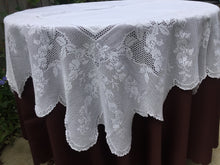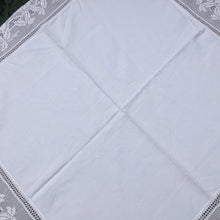
Ultra rare lace collectors item in superb condition. The design appeared in one of the Weldons publications in the 1930s and their policy was not to name or credit the designers. However this is widely believed to be one of Mary Card's designs although not confirmed by hard evidence.
Measuring approximately 127 x 127 cm/50" including the lace edging. The linen centre is approximately 59 cm/23" SQ.
Condition: immaculate, museum quality.
Price includes free worldwide shipping with tracking and insurance.
Please view the photos carefully and ask any questions before buying.
Mary Card (1861-1940) was an Australian educator and lace designer who took crochet to another level. Starting a new career as an independent middle aged woman, she shot to stardom status first in Melbourne, then moved to London and later to New York where she worked for women's magazines and continued to publish her own, very successful charts and books. Her stunning unparalelled patterns were inspired by nature, especially by the unique Australian flora and fauna. Her work has delighted and enriched the lives of women across the world when the craft of lacemaking was very popular and is still highly regarded today with collectors and lovers of antique lace. She was a very prolific designer, so much fun to be had if you should decide start collecting her work. Mary's designs inlude numerous small doilies, placemats, clothing accessories, as well as over 40 large items such as tablecloths, chair covers, towel insets and bedspreads.
We do due diligence when deciding the authenticity of the pieces we list. Some designs commonly believed to be Mary Card's work cannot be authenticated as some magazines did not credit or name their designers. For those who wish to do their own research, we recommend the excellent books of Barbara Ballantyne on the topic.
Not quite what you needed? For more beautiful TABLECLOTHS visit and bookmark our website: https://romantiques.com.au/collections/tablecloths
You can buy with confidence from our large collection of carefully selected genuine vintage and antique items.
Our customers in every corner of the world know that buying vintage is good for the planet, while we also get something that was made with quality and endurance in mind.
Most of the products in our store were handmade with love by artists and craftspeople of the past who laboured over countless hours to create something unique to show the world their best skills.
Please remember that signs of wear and flaws in vintage items actually add to their charm and tell us a story, that’s why we love them!
Sometimes we do come across antique and vintage goods that were preserved in perfect or near perfect condition after decades spent in storage. We hardly know the exact time when an item was produced, so we rely on research and experience to give an estimate.












